Beauty products from skin-care to body care and fragrance are supposed to help make us feel like our best selves. However, in recent years, consumers are learning there's a dirty side to beauty. Some of their tried and true products are most likely full of questionable ingredients that could be considered toxic to their bodies. From makeup and perfume to skin and hair care products, the beauty and cosmetics industry is chock-full of toxic ingredients. These are chemicals you shouldn’t touch - much less bathe in, soak up, and slather on.
While there are many products and brands that have made large strides in providing transparency to consumers, there are others on the shelves that aren’t completely honest. Though a beauty product may have a clean, honest-looking label that boasts “natural” and “organic” ingredients - there still may be harmful chemicals that should be avoided and eliminated from your beauty routines.
Rather than living in fear, there are plenty of ways that you can begin detoxing your beauty routine. One easy, and very important way is to educate yourself on the different ingredients out there. In this quick-start guide, we’ve identified 4 common unsafe ingredients you’ll want to consider kicking out of your beauty cabinet.
1. Parabens
Parabens are a class of chemicals commonly found in a wide variety of beauty products. The most common parabens are methylparaben and propylparaben. They’re highly valued by the cosmetics industry as a preservative because they inhibit microbial growth.
- Where you’ll find them
Parabens are in almost every kind of cosmetic and beauty products and even in some foods. Including toothpaste, perfume, deodorant, lotions, and soaps.
- Why they're dangerous
Parabens are known to be hormone disruptors. Which can be been linked to increased risk of breast cancer and reproductive toxicity. They’ve also been linked to skin cancer and toxicity in developing children.
2. Phthalates
Phthalates are a family of chemicals that make plastics more flexible and serve a wide variety of purposes in beauty and cosmetics products. They’re widely banned in Europe, but still common in the USA.
- Where you’ll find them
Phthalates are shockingly common. You’ll find them in nail polish, perfumes, hair spray, aftershave, soaps, and shampoos, and countless other beauty and self-care products.
- Why they're dangerous
Many different conditions have been linked to phthalate exposure, including breast cancer, developmental issues in children, obesity, insulin resistance, and more. Don’t buy anything containing phthalates, DEP, DBP, or DEHP (which are common types of phthalates). It’s best to look for perfumes that are clearly labeled as “phthalate-free” (like Skylar’s!) This way you don’t have to second-guess the safety of your favorite scents and products
3. Sodium Laureth Sulfate
Sodium Laureth Sulfate (SLES) is a detergent used to make cosmetics and beauty products bubbly or foamy.
- Where you’ll find it
SLES is commonly used in body wash, shampoo, face cleansers, as well as dish soap and other home cleaning products.
- Why it’s dangerous
Interestingly, it’s not the SLES you need to be concerned about - but rather a by-product of SLES manufacturing called 1,4-dioxane that often hitches a ride alongside SLES. 1,4-dioxane has been linked to cancer and organ toxicity and contaminates a large number of cosmetics products. The Campaign for Safe Cosmetics found it in 22% of their tested products. Because 1,4-dioxane is a contaminant, it’ll never be listed in a beauty product’s ingredients. The only way to avoid it is to avoid the chemicals it appears alongside. Check the ingredients and don’t buy products that contain SLES or PEG compounds.
4. Triclosan & Triclocarban
Triclosan (and the similar triclocarban) is an antimicrobial agent. It kills a wide range of bacteria and viruses. Beauty and cosmetics manufacturers include it to prevent microbial growth or to give their products “antibacterial” properties.
- Where you’ll find it
Antibacterial soaps and detergents typically contain triclosan, as does shaving cream, antiperspirant and deodorant, toothpaste and tooth whiteners, and various types of makeup.
- Why it’s dangerous
Triclosan is an endocrine disruptor, meaning it can cause hormonal problems. It’s also known to accumulate in the environment, where it threatens aquatic life and contributes to the emergence of dangerous, drug-resistant bacteria.
The best way to avoid these ingredients is to check the ingredient lists on each of your products. Sometimes an “all-natural” or “organic” label isn’t enough, to dig deeper check out the ingredient list on your bottles or packaging. Look for products that explicitly say that they are free of the specific ingredients that matter most to you. While detoxing may seem daunting, it is not impossible. There are many brands out there like Skylar that have you in mind to bring you safe products that help make you feel beautiful and confident.
Further Reading
Not sure about an ingredient? Check out the Campaign for Safe Cosmetics. Here you can find an extensive and well-researched list of potentially-unsafe ingredients that appear in many beauty products. Can’t find a specific chemical you’re looking for? If a chemical isn’t listed in their database, it’s most likely safe for your use!












